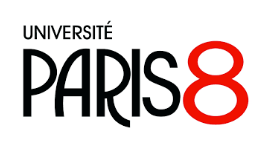12h00
108
Cf. ke site de l'Atelier de phonologie
Résumé :
Implications of Nasalization Blocking Strategies in Xochistlahuaca Amuzgo
Nasalization, both progressive and regressive, is an important phenomenon in the Amuzgo spoken in Xochistlahuaca in Mexico. However, on a reduced syllabic form of CCV, identity is easily lost. This presentation looks at different blocking strategies employed to block nasalization at the lexical and morphological levels and their implications.
Paralleling Stephen Marlett’s observation on Mixtec in his 1992 work, *NV and *LVn do not occur in Amuzgo (N being a nasal sonorant, L a non-nasal sonorant, V a vowel and Vn a nasal vowel). This attests to both progressive and regressive nasalization. On the other hand, and as may be expected, LV and NVn do occur.
|
1. |
ná [nán] ‘hot’ |
2. |
wa̰ [wa̰] ‘EXIST.INHUM’ |
3. |
wa̰n [ma̰n] ‘EXIST.HUM’ |
What is particular to Amuzgo, however, is the template NTV, better analyzed as NTV given that NT becomes N when V is nasalized, e.g. by the 3SGHUM marker, as in examples 4 to 6. The difference between the template NTV, which also exists, is seen when the latter is nasalized without loss of the stop, as in example 7.
|
4. |
[ɲdjó] |
5. |
[ma-ndaʔ] |
ma-naʔ=an a gift.3SGHUM=3SG’
|
|
|
6. |
[ma-hndɛ] |
ma-hnɛɛ́ |
7. |
[ma-ɲ̍tjɔ̤∙] |
[ma-ɲ̍tjɔ̤n∙] |
On the morphological level, nasal blocking is also carried by allomorphy in plurals and future markers, though of a different form. In the former, the nasal morpheme /n/ denasalizes as [l] (examples 8 and 9) where in the future marker, also /n/, an NT type is recalled, though a velar stop rather than an alveolar, [ŋ̩́k] (examples 10 and 11).
|
8. |
ʦʔán∙ |
[nʔán∙] |
ska∙ |
[l̩ka∙] |
|
|
10. |
tɔ ∙ ‘to vomit’ |
[ń̩-tɔ∙] ‘FUT-vomit’ |
huʔ ‘throw, expluse’ |
[ŋ̩́k-huʔ] ‘FUT-throw, expluse’ |
These strategies seem to imply a balancing of concerns against preventing identity loss through nasalization by maintaining what may appear to be an array of nasal allophones and allomorphs, but that actually form a strictly dedicated set that works to preserve identity.



